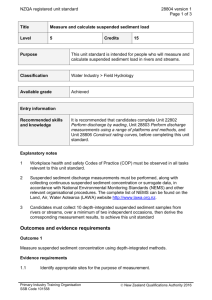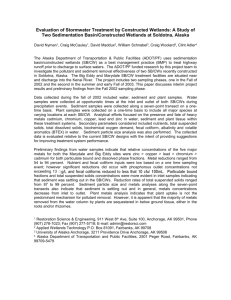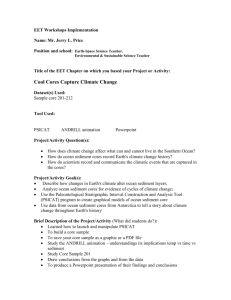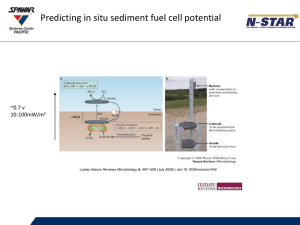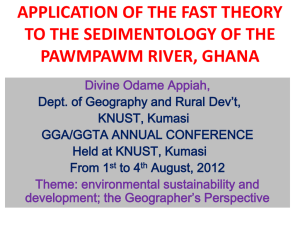Cenwei Liu. 2014. Spatial and Temporal Variation in size and shape
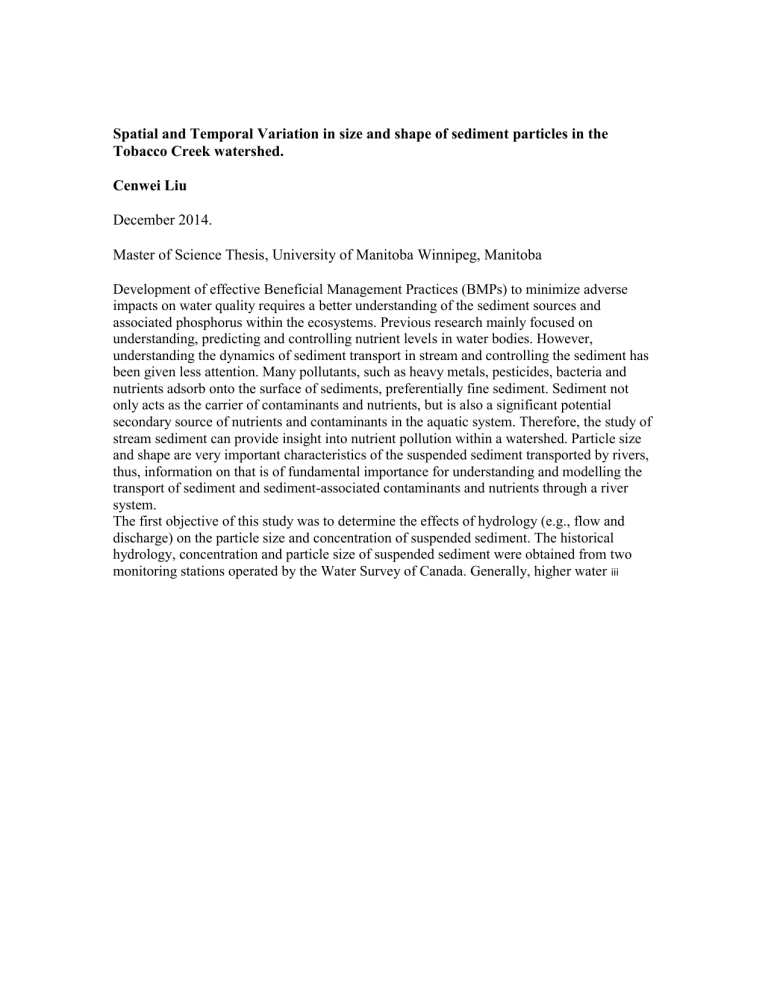
Spatial and Temporal Variation in size and shape of sediment particles in the
Tobacco Creek watershed.
Cenwei Liu
December 2014.
Master of Science Thesis, University of Manitoba Winnipeg, Manitoba
Development of effective Beneficial Management Practices (BMPs) to minimize adverse impacts on water quality requires a better understanding of the sediment sources and associated phosphorus within the ecosystems. Previous research mainly focused on understanding, predicting and controlling nutrient levels in water bodies. However, understanding the dynamics of sediment transport in stream and controlling the sediment has been given less attention. Many pollutants, such as heavy metals, pesticides, bacteria and nutrients adsorb onto the surface of sediments, preferentially fine sediment. Sediment not only acts as the carrier of contaminants and nutrients, but is also a significant potential secondary source of nutrients and contaminants in the aquatic system. Therefore, the study of stream sediment can provide insight into nutrient pollution within a watershed. Particle size and shape are very important characteristics of the suspended sediment transported by rivers, thus, information on that is of fundamental importance for understanding and modelling the transport of sediment and sediment-associated contaminants and nutrients through a river system.
The first objective of this study was to determine the effects of hydrology (e.g., flow and discharge) on the particle size and concentration of suspended sediment. The historical hydrology, concentration and particle size of suspended sediment were obtained from two monitoring stations operated by the Water Survey of Canada. Generally, higher water iii
discharge resulted in higher sediment concentration. The stream discharge and total suspended sediment concentration showed temporal patterns and suspended sediment concentration clearly responded to major events such as floods. A strong correlation between the particle size of suspended sediment and stream discharge was observed in most of the years during the study period. Generally, the higher water discharge resulted in finer particle size following the snowmelt and rainfall events. The second objective of this study focused on quantification and characterization of the spatial and temporal variation in particle size of sediment during sediment transport in the Tobacco Creek Watershed (TCW), Manitoba. The relationship between particle size of suspended sediment and potential source materials was also investigated. The suspended sediment collected in the upper reaches (d
50
= 51.2 μm at
IS5) was coarser than that in the lower reaches (d
50
=12.7 μm at IS1). The suspended sediment was enriched in fine-size fraction (mean % <63μm = 81.3% following snowmelt event, and 66.5% following rainfall event) compared to its source materials (mean % < 63μm
= 29.5% of streambank, and 24.3% of topsoil). Seasonal variation was observed in the particle size of suspended sediment and channel bed sediment. The differences in particle size of sediment between snowmelt and rainfall events were due to seasonal variations of flow discharge.
The third objective of this study is to better understand the dynamics of the physical mechanisms that occur during sediment movement. Rock fragments were collected from three selected outcrops mainly in the South Tobacco Creek Watershed (STCW). Particle shape parameters, such as circularity, roundness and aspect ratio, were used to iv
characterize and quantify the rock fragments collected at outcrop wall and downstream near the outcrop. The results showed there is no significant difference in shape parameter among the sampling points downstream. Rock fragments are not becoming rounded in short distances, but they reduced in size. These friable nature shale materials can be easily broken by hand, but they still have angular shape and sharp edge. The findings provide information on dynamics of rock fragments during transport, which the coarser materials can be a source of fine-grained particle.
This research demonstrated the use of digital image analysis, image analysis software and laser diffraction techniques to measure the particle size and shape of sediment and rock fragments. The suspended and channel bed sediment transported in the Tobacco Creek
Watershed have been shown to be both spatially and temporally variable in particle size. The particle size characteristics of sediment provided clear evidence of size selectivity during the sediment transport from upper reaches to lower reaches. The particle shape characteristics of rock fragments had no significant difference between those collected from the outcrops and from the further sampling points in downstream. Visually, the shape characteristic of rock fragments collected from downstream has been shown slightly rounder during in-stream movement compared to that from outcrops. The findings have important implications for understanding suspended sediment dynamics transport in the study watershed.



